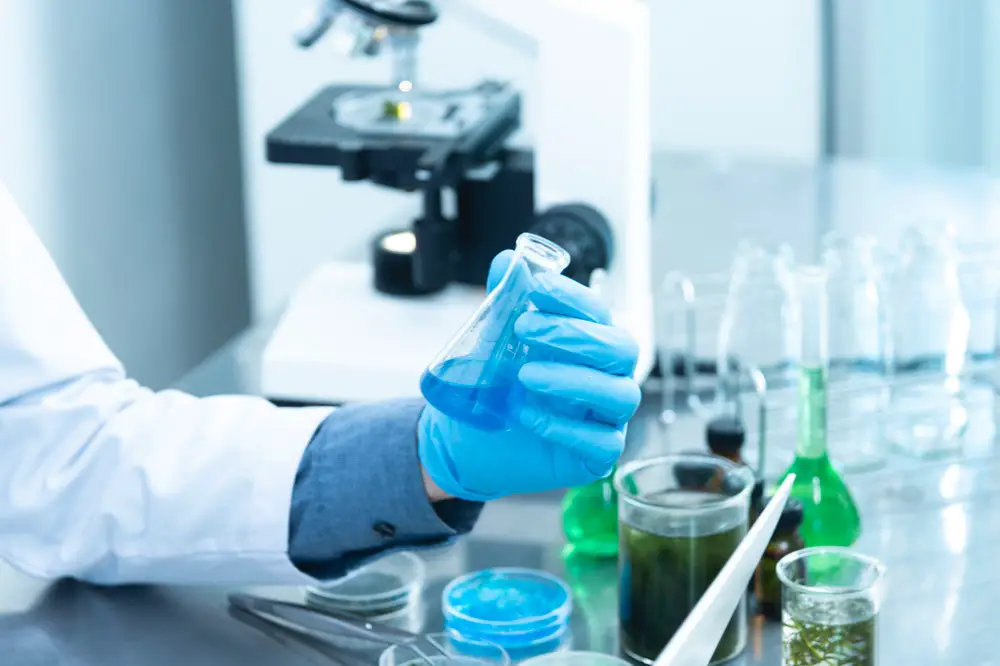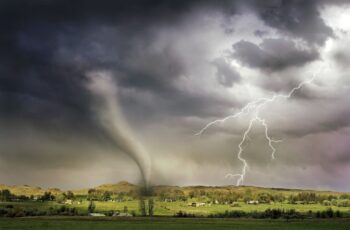Chemistry is a very interesting and important subject as it explains everything involved with compounds and elements around us. Check out these 55 trivia periodic table quiz questions and answers to test your familiarity with chemical elements and have a better understanding of this essential invention. They can be a fun way to learn how to use the table and become familiar with it, so that you can solve chemistry issues and find facts.
Periodic Table Quiz Questions And Answers

1. Which scientist invented the earliest version of the periodic table?
A. Dmitri Mendeleev
B. Alexandre-Emile Béguyer de Chancourtois
C. Lothar Meyer
2. What is the main difference between the modern and earlier periodic table?
A. The earlier table organised elements by atomic weight, while the modern table organised elements by atomic number
B. The earlier table organised elements by atomic number, while the modern table organised elements by atomic weight
C. There are no major differences between two versions
3. How many periods or rows are there on the periodic table?
A. 7
B. 8
C. 9
4. The rows on the periodic table are arranged so that ___ are on the right side and ___ are on the left side.
A. Nonmetals / metals
B. Metals / nonmetals
C. Metals / gases
5. What is the symbol for potassium on the periodic table?
A. P
B. Po
C. K
6. What does the atomic number mean?
A. The number of protons in the atom
B. The number of neutrons in the atom
C. The number of electrons in the atom
7. The element silver is named after which country?
A. Germany
B. Brazil
C. Argentina
8. What is the most metallic element on the periodic table?
A. Caesium
B. Francium
C. Uranium
9. What is the most conductive metal on the periodic table?
A. Silver
B. Copper
C. Gold
10. What is the most abundant element that accounts for up to 75 per cent of the observed ordinary matter?
A. Oxygen
B. Hydrogen
C. Nitrogen
11. Which was the first element that was made artificially?
A. Technetium
B. Hassium
C. Radium
12. What do elements with features intermediate between those of nonmetals and metals are called?
A. Gases
B. Radioactive elements
C. Metalloids
13. What is the name of the columns of elements on the periodic table?
A. Periods
B. Groups
C. Categories
14. Most of the chemical elements on the periodic table are ___
A. Metals
B. Metalloids
C. Nonmetals
15. What is the symbol for calcium on the periodic table?
A. Ca
B. Cl
C. Cm
16. Which of the following chemical elements is not a halogen?
A. Fluorine
B. Chlorine
C. Selenium
17. What is the first chemical element on the periodic table?
A. Hydrogen
B. Helium
C. Lithium
18. What is the atomic mass of Calcium?
A. 30
B. 40
C. 50
19. Aluminium would have similar properties to which of the following chemical elements?
A. Germanium
B. Gallium
C. Iron
20. Mercury, Cadmium, and zinc all belong to which group on the periodic table?
A. 12
B. 13
C. 14
21. What is the most common colour that you can see in pure carbon?
A. White
B. Yellow
C. Black
22. When we move from the bottom to the top of the periodic table:
A. Electronegativity increases and ionisation energy decreases
B. Both electronegativity and ionisation energy decreases
C. Both electronegativity and ionisation energy increases
23. When it comes to electron affinity, which of the following statements can be applied to halogens?
A. Halogens have high values of electron affinity
B. Halogens have low values of electron affinity
C. There is no generalisation about electron affinity for halogens
24. When we move from right to left across the periodic table:
A. Electronegativity increases
B. Atomic radius increases
C. Atomic radius decreases
25. Which of the following are the features of nonmetals?
A. Basically accept electrons easily and poor conductors of electricity and heat
B. Basically accept electrons easily and good conductors of electricity and heat
C. Basically donate electrons easily and good conductors of electricity and heat
26. Which of the following groups are regarded as metals on the periodic table?
A. Only basic metals
B. Halogens, alkaline earths, alkali metals, basic metals, transition elements
C. Alkaline earths, alkali metals, rare earths, basic metals, transition elements
27. Where can we find the chemical element with the smallest atom in the periodic table?
A. On the right and bottom area
B. On the right and top area
C. On the left and bottom area
28. Which of the following chemical elements has the highest electron affinity?
A. Chlorine
B. Bromine
C. Iodine
29. What is the typical colour of fluorine gas?
A. Yellowish or brown
B. Colourless
C. Opaque white
30. What is the atomic number of aluminium?
A. 10
B. 13
C. 16
31. Sodium belongs to which element group?
A. Alkali metal
B. Transition metal
C. Alkaline earth metal
32. Which of the following chemicals is a noble gas?
A. Hydrogen
B. Chlorine
C. Krypton
33. How many chemical elements are there on the first row of the periodic table?
A. 2
B. 8
C. 12
34. Which of the following is not a heavy metal element?
A. Mercury
B. Lead
C. Magnesium
35. Which of the following sources of food is often contaminated with heavy metals like mercury, arsenic, or cadmium?
A. Mushroom
B. Shellfish
C. Beef
36. What was lead previously used in industry?
A. An ingredient in pain
B. A chemical to produce uranium ore
C. A solvent to produce chemical alloys
37. Which of the following statements are correct about heavy metals?
A. Elements with high densities that readily react with other elements
B. Elements with low densities and low potential for making alloys
C. Elements with high densities that can be toxic, even in a small dose
38. Known as the densest natural element, this heavy metal is often used in electrical contacts or fountain pens. What is it?
A. Uranium
B. Francium
C. Osmium
39. This is one of the most expensive metals and is a super-conductor. Thee mineral niobite is its main source of mining. What is it?
A. Rhenium
B. Rhodium
C. Niobium
40. Which heavy metal is used to make the strongest artificial magnetic field?
A. Neodymium
B. Europium
C. Cobalt
41. What was the first metal to be named after a person? It is usually used to produce bright light in cinema projectors.
A. Einsteinium
B. Rutherfordium
C. Seaborgium
42. Named after the Norse goddess of beauty, this heavy metal was first discovered in 1801 but scientists convinced it was chromium. It was rediscovered in 1931. What is it?
A. Indium
B. Vanadium
C. Iridium
43. Which heavy metal is the lightest artificial element without stable isotope?
A. Technetium
B. Radium
C. Barium
44. This heavy metal is often used to make surgical devices as part of an alloy because it can resist corrosion and does not irritate the body’s tissues. What is it?
A. Lithium
B. Tantalum
C. Curium
45. Usually used as a rat poison, this heavy metal is also known as the “Inheritance Powder” or the “Poisoner’s Poison.” What is it?
A. Lead
B. Arsenic
C. Thallium
46. How can mercury get into shellfish and fish?
A. The element is naturally occurring in water bodies
B. The element can enter rivers or oceans through industrial wastes
C. The element can be found in many devices for catching and storing fish
47. Which heavy metal is also known as the “King of Poisons” due to its discreet and potent use in murdering people by the ruling class?
A. Cadmium
B. Lead
C. Arsenic
48. What is the common criterion of specific gravity used for classifying heavy metals?
A. Greater than 3.0 g/cm3
B. Greater than 5.0 g/cm3
C. Greater than 7.0 g/cm3
49. Mercury and silver are often used together for which dental applications?
A. Teeth braces
B. Teeth fillings
C. Dental crown
50. What is the main purpose of including heavy metals in glass or ceramic grazes?
A. To make them harder
B. To add colours
C. To improve flexibility
51. What is the name of the rows of elements on the periodic table?
A. Periods
B. Blocks
C. Groups
52. What is the last chemical element on the periodic table with the atomic number of 118?
A. Tennessine
B. Livermorium
C. Oganesson
53. Which of the following is a synthetic element that cannot be found in nature?
A. Fermium
B. Rhenium
C. Iridium
54. Many chemical elements are named after countries. Which of the following is NOT one of these?
A. Germanium
B. Nihonium
C. Chinanium
55. The letter I is the symbol for which chemical element?
A. Iron
B. Iodine
C. Iridium
Can you answer all of these periodic table quiz questions and answers above? They can be a great and interesting way to help you learn chemistry better. Check out the following anatomy and physiology trivia, or this cartoon quiz to learn more facts and knowledge.


Amanda
Please, you need to check the answers of these questions because some of them are very wrong.
Yuneth Nikila Sripriyadarshan
are they true
Yuneth Nikila Sripriyadarshan
wrong calcium is 20 not 40
Nicky
Calcium’s atomic weight is 40.078. It’s true that it’s #20 in the periodic table but that was not the question. 😉
Angelina Saini
Q no. 31. Sodium belongs to which element group?
the correct answer is A. Alkali metal
please correct the answer in your record.
Angelique
Q 22 has a wrong answer, going up the group, ionisation energy increases not decreases.
Q 24 also has a wrong answer. Atomic radius decreases across a period.
Aokiji
This site is just making me doubt myself and put false info in my head. Please correct them ASAP before others also doubt themselves